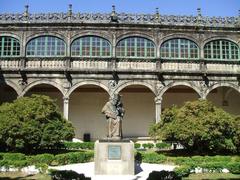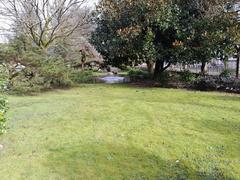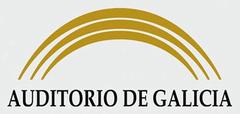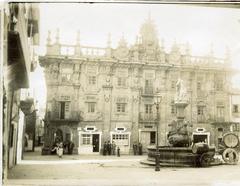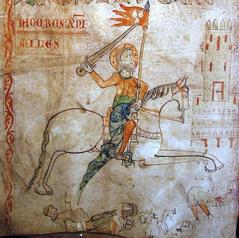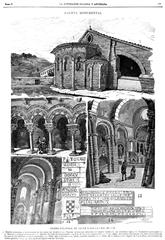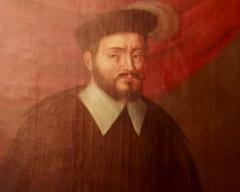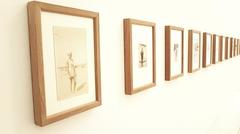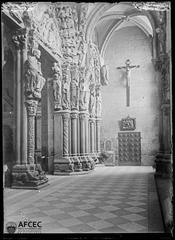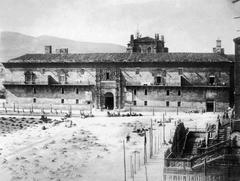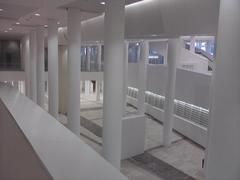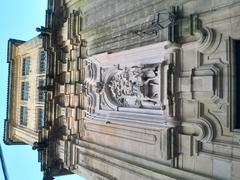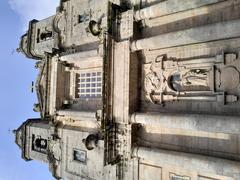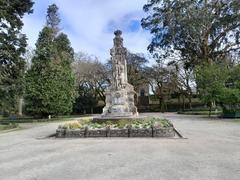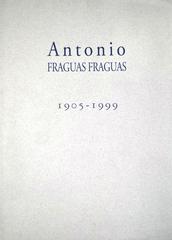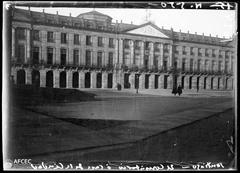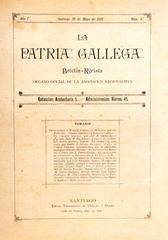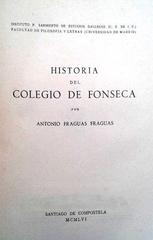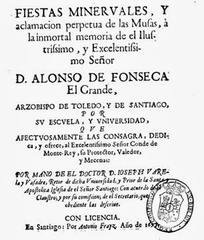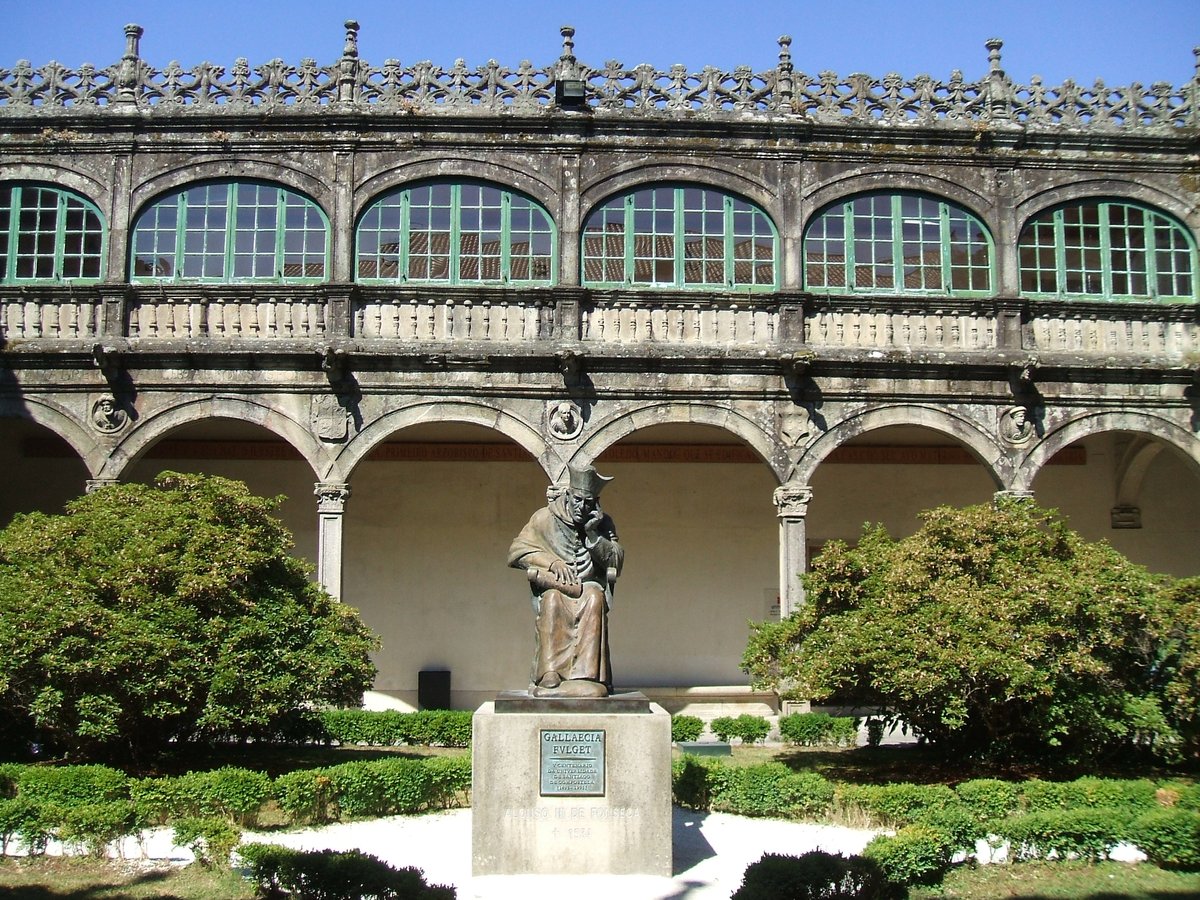
Library Of The University Of Santiago De Compostela
Library of the University of Santiago de Compostela: Visiting Hours, Tickets, and Visitor Guide
Date: 14/06/2025
Introduction
Nestled within Santiago de Compostela’s UNESCO-listed old town, the Library of the University of Santiago de Compostela (USC) is a remarkable blend of academic tradition, architectural splendor, and cultural significance. Established alongside one of Spain’s oldest universities in 1495, the library has evolved from its Renaissance origins in the Colegio de Fonseca to encompass modern facilities such as the Library of Galicia within the striking Cidade da Cultura complex. Serving as both a guardian of Galician intellectual heritage and a vibrant center for research and culture, the library offers visitors an immersive journey through centuries of knowledge, artistry, and academic pursuit.
This detailed guide presents the library’s historical background, architectural highlights, collections, and essential visitor information—including hours, ticketing, accessibility, nearby attractions, and practical tips—ensuring an enriching experience for scholars, tourists, and culture enthusiasts alike (USC Library website, GoAskALocal).
Table of Contents
- Origins and Historical Evolution
- Architectural Highlights and Heritage Spaces
- Collections and Special Holdings
- Practical Visitor Information
- The Library’s Role in Galician and Spanish Culture
- Visuals and Media
- Frequently Asked Questions (FAQ)
- Conclusion and Final Tips
- References
Origins and Historical Evolution
The roots of the USC Library trace back to the earliest days of the university, founded in 1495 and officially recognized in 1504. Initially designed to support academic and theological study, the library’s early collections were shaped by the intellectual climate of late medieval Spain. Housed in the Renaissance cloisters of the Colegio de Fonseca, the library benefited from patronage by ecclesiastical authorities and local nobility, amassing rare manuscripts and incunabula (GoAskALocal, Wanderlog).
The Enlightenment spurred the acquisition of scientific and philosophical works, broadening the scope beyond theology and law. The 19th and 20th centuries saw further expansion, modernization of cataloguing systems, and a renewed emphasis on Galician language and culture following the Spanish Civil War.
Architectural Highlights and Heritage Spaces
Colegio de Fonseca: Renaissance Masterpiece
The library’s historic heart lies within the Colegio de Fonseca, a celebrated example of Spanish Renaissance architecture. Constructed under Archbishop Alonso de Fonseca, the building features a harmonious cloister, arcades, and a façade with classical motifs. Visitors are drawn to the tranquil courtyards, vaulted reading rooms with wooden beams, and original stonework, all of which create a scholarly yet welcoming ambiance (Trevor Huxham Blog).
Library of Galicia: Modern Innovation
The library system expanded in the 21st century with the Library of Galicia, part of the Cidade da Cultura complex designed by Peter Eisenman. Its undulating quartzite-clad forms and panoramic interiors echo Santiago’s landscape and offer state-of-the-art research facilities (ArchDaily). This site houses a vast collection, including rare manuscripts and digitized archives.
Additional Locations
With 20 service points across the Santiago and Lugo campuses, each branch provides modern study spaces, digital resources, and specialized collections, all integrated into the city’s architectural tapestry (USC Library Overview).
Collections and Special Holdings
The USC Library is renowned for:
- Medieval Manuscripts & Incunabula: Rare works in Latin, Spanish, and Galician.
- Biblioteca América: A unique collection reflecting Galician connections with the Americas.
- Scientific, Humanities, and Social Science Holdings: Supporting over 60 degree programs and research initiatives.
- Digitized Resources: The Minerva repository offers open access to thousands of digitized documents, theses, and rare publications.
- Special Exhibitions: Rotating displays of illuminated manuscripts, atlases, and early scientific works (Wanderlog).
Practical Visitor Information
Visiting Hours
- Colegio de Fonseca Historic Library:
Monday to Friday: 10:00 AM – 6:00 PM (Verify on USC Library website for seasonal variations) - Main Library Branches:
Monday to Friday: 8:30 AM – 9:30 PM
Weekends and holidays: Reduced hours, typically 10:00 AM – 6:00 PM
Extended hours during exam periods
Tickets and Access
- Admission:
Free access to public and reading areas. Some special collections require advance booking or academic credentials. - Guided Tours:
Available by appointment. Recommended to book in advance, especially during peak tourist seasons.
Accessibility
- Wheelchair ramps, elevators, and adapted restrooms available at major sites.
- Staff available to assist visitors with mobility or special needs.
Location and Travel Tips
- Central Location:
In the old town, steps from the Cathedral of Santiago, Praza do Obradoiro, and major historic sites (onedayitinerary.com). - Getting There:
Easily accessed on foot, by local bus, or taxi. - Best Times to Visit:
Mid-morning or early afternoon on weekdays for a quieter experience.
Events and Exhibitions
- Regular cultural events, exhibitions, and academic lectures.
- Check the university’s events calendar or library website for current programming.
The Library’s Role in Galician and Spanish Culture
Beyond its academic function, the USC Library is a pillar of Galician cultural identity. Its archives safeguard invaluable documents on regional history, the Camino de Santiago, and Iberian heritage, playing a key role in cultural preservation and public engagement (CaminosantiagoCompostela).
Visuals and Media
- Explore virtual tours and digital archives on the USC Library website.
- Preview images of cloisters, reading rooms, and special exhibitions—ideal for planning your visit.
- Use alt text such as “Library of the University of Santiago de Compostela visiting hours” for online content.
Frequently Asked Questions (FAQ)
Do I need a ticket to visit the library?
General admission is free. Special collections or guided tours may require advance booking.
What are the opening hours?
Typically, Monday to Friday, 8:30 AM – 9:30 PM; weekends have reduced hours. Always check the official schedule.
Is the library accessible?
Yes, with ramps, elevators, and staff assistance.
Can I take photographs?
Photography is permitted in public areas (no flash or tripod). For special collections, seek staff permission.
Are guided tours available?
Yes, but advance booking is recommended.
Is there support for international visitors?
Most staff speak English; signage is in Spanish, Galician, and often English.
Conclusion and Final Tips
The Library of the University of Santiago de Compostela is a living testament to Galicia’s dedication to knowledge, culture, and architectural beauty. Its historic spaces, combined with modern resources and a welcoming atmosphere, make it an essential stop for anyone visiting Santiago. To maximize your visit:
- Check the USC Library site for updated hours and tour information.
- Plan to explore nearby attractions like the Cathedral, Praza do Obradoiro, and local cafés.
- Download the Audiala app for interactive maps and guided tours.
Whether you are a scholar, pilgrim, or traveler, the USC Library offers a gateway to the cultural and intellectual heart of Galicia.
References
- GoAskALocal – Travel Guide to Santiago de Compostela
- USC Library Official Website
- LotusEatersTravel – Guide to Visiting Santiago de Compostela
- Wanderlog – Most Historic Buildings and Sites in Santiago de Compostela
- CaminosantiagoCompostela – Ultimate Visitors Guide
- USC Official – Library Overview
- ArchDaily – City of Culture by Eisenman Architects
- Trevor Huxham Blog – Historic University Santiago Tour
- OneDayItinerary – One Day in Santiago de Compostela
- EdArabia – Universidade de Santiago de Compostela
